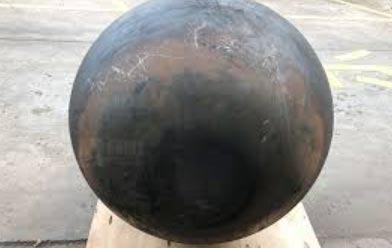How do you make a big steel ball?
Views: 506 Update Date:Jun 12 , 2024
Making a large steel ball involves several steps, combining metalworking techniques and precise engineering. Here's a general outline of the process:
Forging
Billet Preparation: Start with a steel billet, which is a solid piece of steel.
Heating: Heat the billet in a furnace until it becomes malleable.
Forging: Use a forging press or hammer to shape the heated billet into a rough spherical form.
Trimming: Remove excess material to get closer to the final shape.
Casting
Mold Creation: Create a mold of the desired ball shape, often in two halves.
Melting Steel: Melt steel in a furnace.
Pouring: Pour the molten steel into the mold.
Cooling: Allow the steel to cool and solidify.
Lathe Turning: Using a lathe to remove excess material and achieve a closer approximation of a sphere.
Milling: For larger balls, milling machines can be used to grind and shape the surface.
Quenching: Rapidly cooling the ball after heating to a high temperature.
Tempering: Reheating the ball to a lower temperature to reduce brittleness.
Grinding: Using grinding machines to refine the spherical shape.
Lapping: A process where the ball is rotated against a hard surface with an abrasive slurry to achieve a fine surface finish and precise dimensions.
Polishing: Final polishing to achieve a smooth, reflective surface if needed.
Dimensional Inspection: Measuring the diameter and roundness with precise instruments.
Surface Finish Inspection: Checking for the desired surface smoothness.
Hardness Testing: Ensuring the ball has the appropriate hardness.
Non-Destructive Testing: Methods like ultrasonic or magnetic particle testing to check for internal or surface defects.
Summary
Creating a large steel ball involves selecting the appropriate steel, forming the rough shape through forging or casting, refining the shape through machining, heat treating for desired properties, precision finishing, and rigorous inspection to ensure quality. Each step requires careful control and precision to produce a high-quality steel ball.
Prev: How are grinding balls manufactured?
Next: Why Every Industry Should Choose Forged Steel Ball?
1. Material Selection
Choose the type of steel based on the required properties of the ball (e.g., hardness, corrosion resistance, etc.). Common choices include carbon steel, stainless steel, or alloy steel.2. Forming the Ball
There are a few methods to form the steel ball:Forging
Billet Preparation: Start with a steel billet, which is a solid piece of steel.
Heating: Heat the billet in a furnace until it becomes malleable.
Forging: Use a forging press or hammer to shape the heated billet into a rough spherical form.
Trimming: Remove excess material to get closer to the final shape.
Casting
Mold Creation: Create a mold of the desired ball shape, often in two halves.
Melting Steel: Melt steel in a furnace.
Pouring: Pour the molten steel into the mold.
Cooling: Allow the steel to cool and solidify.
Removing the Mold: Break open the mold to release the rough ball shape.

3. Rough Machining
Once a rough spherical shape is obtained through forging or casting, it undergoes rough machining to further refine the shape. This includes:Lathe Turning: Using a lathe to remove excess material and achieve a closer approximation of a sphere.
Milling: For larger balls, milling machines can be used to grind and shape the surface.
4. Heat Treatment
Heat treat the steel ball to achieve the desired hardness and other mechanical properties. This can involve processes such as:Quenching: Rapidly cooling the ball after heating to a high temperature.
Tempering: Reheating the ball to a lower temperature to reduce brittleness.
5. Precision Machining
To achieve a high degree of precision and smooth surface finish:Grinding: Using grinding machines to refine the spherical shape.
Lapping: A process where the ball is rotated against a hard surface with an abrasive slurry to achieve a fine surface finish and precise dimensions.
Polishing: Final polishing to achieve a smooth, reflective surface if needed.
6. Inspection and Testing
Ensure the ball meets the required specifications through various inspections and tests:Dimensional Inspection: Measuring the diameter and roundness with precise instruments.
Surface Finish Inspection: Checking for the desired surface smoothness.
Hardness Testing: Ensuring the ball has the appropriate hardness.
Non-Destructive Testing: Methods like ultrasonic or magnetic particle testing to check for internal or surface defects.
7. Final Adjustments and Finishing
If any discrepancies are found during inspection, make final adjustments through additional grinding or polishing. Clean the ball to remove any residues from the manufacturing process.Summary
Creating a large steel ball involves selecting the appropriate steel, forming the rough shape through forging or casting, refining the shape through machining, heat treating for desired properties, precision finishing, and rigorous inspection to ensure quality. Each step requires careful control and precision to produce a high-quality steel ball.





